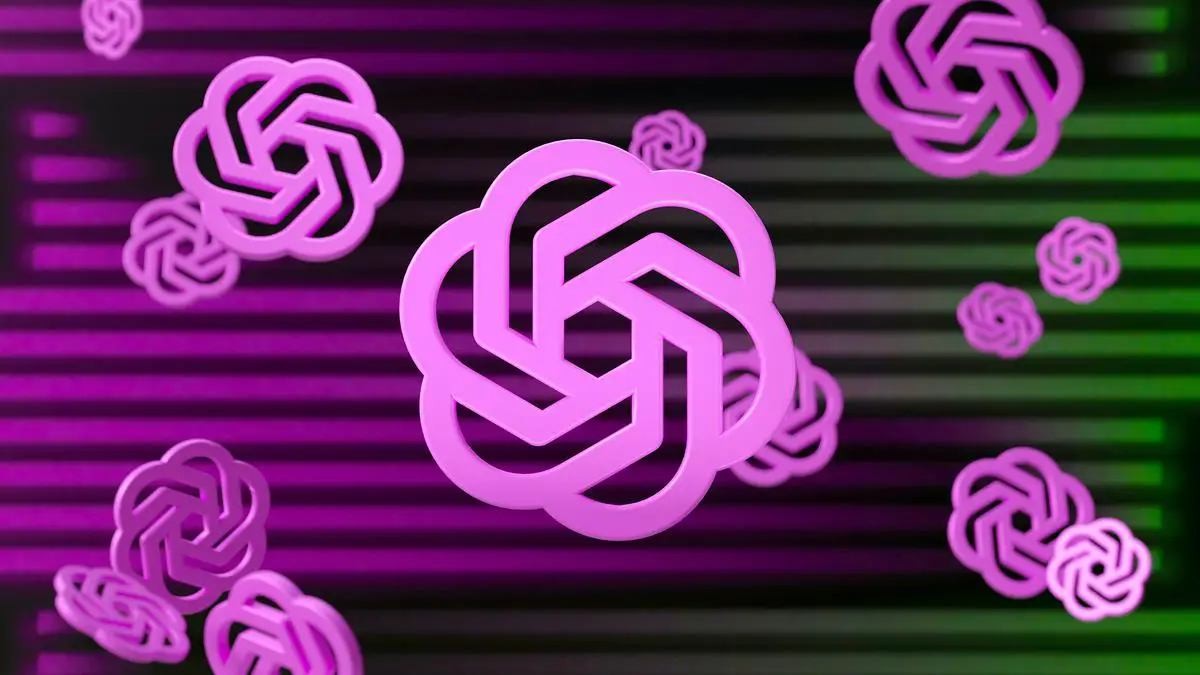As we usher in the age of artificial intelligence and machine learning, one technological innovation stands out, progressing rapidly and gaining significant traction – Chat GPT training. This revolutionary AI tool has path-breakingly evolved since its nascent stages, largely due to the insightful and dedicated efforts of tech visionaries.
The journey of chat GPT communication traverses from its inception, through its exciting evolution, to its present-day sophistication. This thread is interlaced with businesses leveraging the technology in unique ways that align with the current industry trends.
Equally important is its undeniable impact on customer service, outperforming traditional methods and infusing customer interactions with efficiency, accuracy, and satisfaction. In this vibrant exploration, we will delve into understanding the depth and breadth of chat GPT training while contemplating its immense potential for future innovation.
1. The Genesis and Progression of Chat GPT Training
Table of Contents
The Unstoppable Evolution of Chat GPT Training: A Tale of Innovation and Market Need
In the burgeoning field of digital communication, a groundbreaking development is actively rewriting the story. This innovation is none other than chat Generative Pretrained Transformers (GPT) – the revolutionary technology that powers intelligent, engaging, and exceptionally dynamic chatbots. Conceptually, chat GPT training has evolved at an exponential rate, driven by an insatiable market need for automated, yet human-like, dialogue.
Before diving into the intricacies of chat GPT training, it’s essential to appreciate its origins. Technology behemoth, OpenAI, stimulated the initial spark with GPT-1, the first rendition of the GPT machine learning model. Initially, GPT-1 comprised 117 million parameters, catalyzing a new era in natural language processing (NLP).
But the ambition was higher, the goal – to advance this technology further for more robust and versatile use. Queued after GPT-1 was GPT-2, possessing 1.5 billion parameters and demonstrating a vast improvement in understanding language nuances and providing coherent, contextually relevant responses. While impressive and innovative, the transformative milestone was still to come.
Indeed, GPT-3, the latest chatbot powerhouse, blew all previous versions out of the water. Boasting a staggering 175 billion parameters, the scale, precision, and versatility it offers are unparalleled. GPT-3 not only processes language but can produce human-like text, making the interaction more engaging and realistic.
Though these numbers are impressive, it would be a gross oversight not to discuss the underlying technology that makes this tremendous progression possible. Central to chat GPT training is the refined application of unsupervised learning, where these models train on an enormous text corpus, understanding grammar, facts, reasoning abilities, and even the ability to generate creative, on-the-fly responses.
Progressing in tandem with rapid technological advances, the evolution of chat GPT is also catalyzed by increasing market demand. As society continues to embrace digitization, the need for efficient, round-the-clock customer service has magnified. Enter GPT chatbots – the perfect solution for businesses of all sizes to provide immediate, consistent, and error-free communication.
Moreover, the application of chat GPT training extends beyond customer service. The technology has been effectively harnessed in tutoring services, content creation, programming, and even mental health platforms.
The innovative journey of chat GPT training is as impressive as it is essential. With each version, the technology advances not only in sophistication but applicability as well. This journey is far from over. With machine learning growing rapidly, the potential of chat GPT training is infinite.
In a world where businesses thrive on efficiency and strong communication, this evolution is a welcome revolution. As we immerse ourselves more into the digital realm, chat GPT training is poised to take center stage and become the driving force in not only business interactions but also in bridging the gap between humans and artificial intelligence.

2. Role of Chat GPT Training in Current Business Trends
The Influence of Chat GPT Training on Business Trends
Artificial intelligence has ushered in revolutionary tech trends, one of which is the use of chat Generative Pretraining Transformers (GPT). There’s an undeniable buzz around the world of business about how this emergent tech trend—chat GPT training—is playing a pivotal role in shaping current trends.
One cannot dispute that the rise of chat GPT training translates into a seismic shift in the way businesses handle customer interactions. Enter the innovative hemisphere of AI-powered chatbots. With their ability to mimic human-like text-based conversations, these are quickly becoming vital cogs in the customer service wheel across varied industries. From booking a flight ticket to making an e-commerce transaction, these smart bots have the capability to communicate in real-time.
The utility of chat GPT training goes beyond just customer service though. Within the legal, human resource, and other specialized sectors, they help answer common queries and even pre-qualify leads, thereby optimizing their resources and saving precious time. Meanwhile, companies dealing with a massive inflow of customer queries, especially in the post-pandemic era, can greatly leverage chat GPT training to maintain their service standards.
But, how does one determine its influential capacity? The true measure lies in the wide-range application of this technology. Tech-savvy innovators are already integrating these models into their operations, from automating responses to programming chores and assisting with content generation. Add to this the fact that the AI community is relentlessly working to improve the model’s language comprehension abilities and it becomes clear – the influence of chat GPT training on shaping business trends is not just significant, it is monumental.
Surely, chat GPT training is a gamechanger. Thanks to its capability to generate relevant and concise responses based on previously fed data, businesses have an enhanced ability to fasttrack their processes while saving costs. Ultimately, the potential of chatbots and virtual assistants based on chat GPT models is infinite and their influence on business trends will only continue to grow in the foreseeable future.
However, as is the case with any groundbreaking technology, challenges persist. From the need for ample training data to the risk of the AI generating offensive response, chat GPT training comes with its fair share of limitations. Regardless, innovators are restlessly working towards refining these intelligent models.
For businesses, the future is evidently laced with a growing reliance on such smart, AI-enabled technology. As we stride into this future, chat GPT training will undoubtedly continue to influence trends across industries, pioneering a new age of business efficiency which offers more than meets the eye. Business transitions, driven by such AI implementations, will redefine the parameters of entrepreneurial success and competitive differentiation. How businesses approach this transformative technology will be instrumental in dictating their place in tomorrow’s corporate landscape. Undeniably, embracing chat GPT training is the way forward.
Indeed, the capacity of chat GPT training to redefine business trends is awe-inspiring. Essentially, it is much more than a digital trend – it is a tech-revolution in the making.
3. Impact of Chat GPT Training on Customer Service
Chat GPT training radically transforms businesses by presenting an intelligent mechanism to maintain service standards. The shift from traditional customer service practices to automated AI-powered chatbots offers a more efficient, direct, and cost-effective platform to address customer needs and inquiries.
The unceasing market demand for 24/7, high-quality service has increased the relevance of implementing GPT chatbots across industries. This revolution not only touches upon the general customer service industry but is also witnessing utilization in specialized sectors such as legal and human resources.
For instance, in the legal category, GPT chatbots can be programmed to respond to common legal queries, such as queries about laws, definitions, or standard legal processes. Meanwhile, HR departments can utilize these AI-powered assistants for initial screening processes, answering policy-related queries, tracking time-off requests, among other tasks.
A notable benefit of leveraging chat GPT training in business operations is the ability to maintain service standard consistency. With traditional human-operated customer service, there’s susceptibility to errors, inconsistency, and gaps in knowledge. However, GPT chatbots ensure information provided to customers is uniform and accurate, increasing trust and satisfaction levels.
Another primary application is the automation of tasks and responses. As the technology evolves, the ability of these chatbots to comprehend complex customer interactions and responses continues to improve, considerably reducing the need for human intervention. Similarly, GPT-trained models find significant use in programming chores and content generation, making them a multi-faceted tool for businesses.
However, any innovative technology isn’t devoid of challenges. In the case of chat GPT, questions arise concerning the collection and use of training data. The potential for offensive responses or misinterpretation of queries is a hurdle worth mentioning as well.
AI-enabled technology’s growing influence on the future business trends is undeniable. With the increasing popularity and necessity of GPT chatbots and virtual assistants, businesses must brace for a future where AI is not just an option but a necessity.
This transformative power of chat GPT training not only redefines the notion of business success and competitiveness but also shapes a radically improved customer service practice that can cater to the modern consumer’s demands proficiently. By embracing and adapting to this model, businesses can position themselves a step ahead in their respective industry domain, offering their customers an unparalleled experience.
Undoubtedly, the chat GPT’s transformative nature presents an open playing field for innovation. Businesses’ readiness to adapt and invest in this technology will define their future competitiveness and success. It’s but fair to anticipate a future where the line between human interaction and AI-assisted communication blurs even further. For businesses, understanding this intersection and capitalizing on it may be the key to unlocking unprecedented success.

4. Future Potential of Chat GPT Training
Moving the conversation forward, it’s important to expand on the pivotal role that Generative Pretrained Transformer (GPT) chatbots can play in sector-specific applications. Industries like law and human resources, with their discernible lexicon and process-driven requirements, can greatly benefit from GPT chatbots. These AI concierges adopt the language fluency of the service sector to provide real-time assistance, thus reducing drudgery and enhancing efficiency.
Consider the landscape of the legal domain, where GPT chatbots can be taught to understand and respond to legal jargon, improving client engagement by swiftly addressing common queries. Similarly, in the human resources industry, GPT chatbots can transform recruitment by pre-screening candidates and scheduling interviews while also handling routine employee queries.
In the age of customer centricity, GPT chatbots are tools of reassurance as they ensure consistent service standards. Irrespective of the weight of chat traffic or peak service hours, these bot-brains demonstrate the impeccable ability to timely engage with customers, thereby maintaining service excellence.
It’s undeniable that the spectrum of GPT chatbots extends to automating responses, taking care of programming chores, and generating meaningful content. Looking at this from the lens of an entrepreneur, the idea of elevating time-consuming manual labour to intelligently automated work is nothing less than captivating. From drafting emails to troubleshooting coding problems or even composing first drafts of articles, businesses stand to gain massively from the time and resources saved.
As enthralling as the potential of chat GPT training is, it doesn’t come without outcomes needing navigational skills. Data privacy, the understanding of nuances in human communication, and the risk of generating insensitive or offensive responses are some roadblocks. As inventors and innovators, it’s obligatory to forecast such challenges, design solutions, and set precedents for responsible use of such breakthrough technology.
There is no escaping the future domination of AI-enabled technology, and this will substantially remodel the business trend sphere. The entrepreneurial realm echoes a common sentiment, “Adapt or perish.” Substantial emphasis is being laid on inculcating AI proficiency, considering the transformative potential of GPT chatbots.
In conclusion, bracing for the wave of AI and specifically GPT chatbot training is a strategic move, and maintaining a sense of readiness towards it is nonnegotiable. It is incumbent upon businesses to not only invest but to passionately innovate within this domain, thereby laying a cornerstone for a future where business success and competitiveness is redefined in the language of artificial intelligence.

Photo by maria_shalabaieva on Unsplash
The landscape of chat GPT training is ever-changing and expansive. The innovative tool that began as a spark in the minds of technology pioneers has grown into a bonfire, illuminating paths for numerous businesses, and revolutionizing the customer service industry.
The future looks equally, if not more, promising. With a rich bed of opportunities waiting to be harvested, the prospects for innovation and advancement are virtually limitless.
These upcoming trends and developments will not just shape the capabilities of chat GPT training but are also set to redefine the way businesses connect with their customers. Guided by insight and propelled by a relentless quest for improvement, chat GPT training stands poised at the brink of a new horizon, ready to fuel the next generation of technological progress.

I’m Dave, a passionate advocate and follower of all things AI. I am captivated by the marvels of artificial intelligence and how it continues to revolutionize our world every single day.
My fascination extends across the entire AI spectrum, but I have a special place in my heart for AgentGPT and AutoGPT. I am consistently amazed by the power and versatility of these tools, and I believe they hold the key to transforming how we interact with information and each other.
As I continue my journey in the vast world of AI, I look forward to exploring the ever-evolving capabilities of these technologies and sharing my insights and learnings with all of you. So let’s dive deep into the realm of AI together, and discover the limitless possibilities it offers!
Interests: Artificial Intelligence, AgentGPT, AutoGPT, Machine Learning, Natural Language Processing, Deep Learning, Conversational AI.





